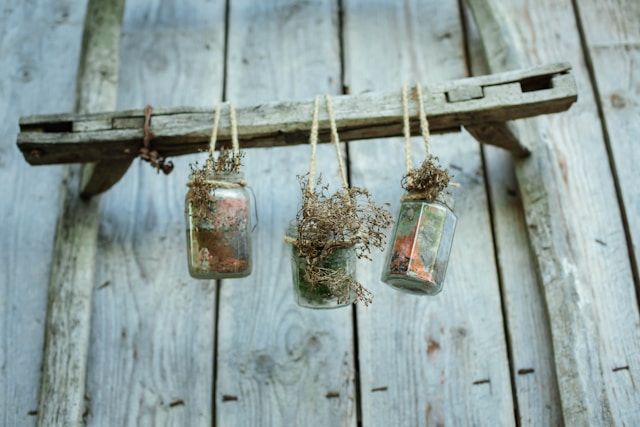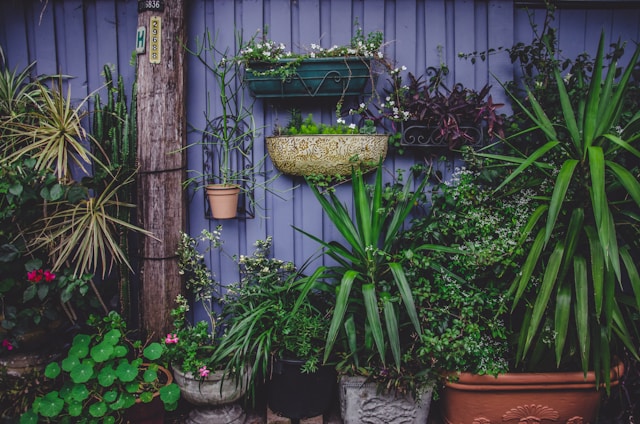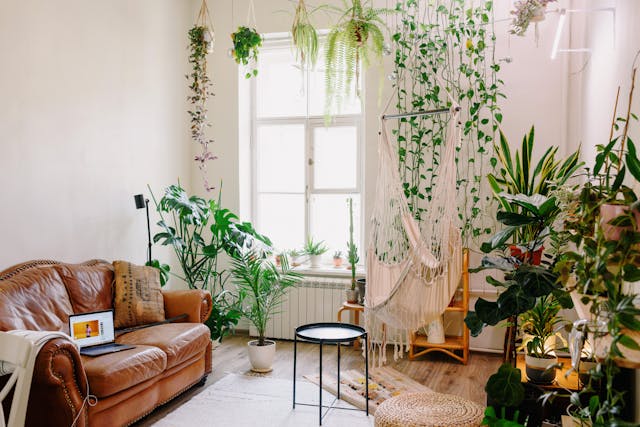Physical Address
304 North Cardinal St.
Dorchester Center, MA 02124
Physical Address
304 North Cardinal St.
Dorchester Center, MA 02124

Gardening is more than just a hobby—it’s a way to bring life, beauty, and tranquility into your home. Whether you’re a seasoned gardener or just starting out, hanging plants can be a game-changer for maximizing space and adding a touch of greenery to your surroundings. But how do you hang plants effectively? In this guide, we’ll explore the best ways to hang plants, why it’s worth the effort, and how to ensure your plants thrive in their elevated homes.
Hanging plants isn’t just a trend—it’s a practical and aesthetic choice with numerous benefits. Here’s why so many gardeners are embracing this approach:
Hanging plants can transform any room or outdoor area into a lush, vibrant oasis. Whether you’re going for a bohemian vibe with macramé hangers or a modern look with sleek plant stands, the right setup can elevate your decor.
If you’re short on floor or shelf space, hanging plants are the perfect solution. They allow you to utilize vertical space, making them ideal for small apartments, patios, or balconies.
Many hanging plants, like pothos and spider plants, are natural air purifiers. By hanging them, you can maximize their ability to filter toxins and improve indoor air quality.
Studies show that being around plants can reduce stress and improve mental well-being. Hanging plants bring the outdoors inside, creating a calming and refreshing atmosphere.
In outdoor spaces, hanging plants can act as natural screens, providing privacy while adding beauty to your patio or balcony.
Hanging plants are often easier to care for, especially if you have pets or children. They’re out of reach, reducing the risk of damage, and many varieties require less frequent watering.
Before you start hanging your plants, there are a few key factors to consider to ensure they thrive:

Most hanging plants prefer bright, indirect light. Direct sunlight can scorch their leaves, so choose a spot that gets filtered light or partial shade.
Hanging plants can dry out faster than those on the ground, so make sure you have a watering routine in place. Use pots with drainage holes to prevent waterlogging, and consider adding a saucer to catch excess water.
Most hanging plants thrive in temperatures between 60-80°F. Avoid placing them near drafts, air conditioning vents, or heaters, as extreme temperature changes can harm them.
Use a well-draining potting mix with ingredients like peat moss, perlite, or vermiculite. This ensures proper aeration and prevents root rot.
Choose a pot that’s slightly larger than the plant’s root ball. This gives the roots room to grow without overwhelming the plant. Also, consider the weight of the pot when filled with soil and water.
Use sturdy hooks, hangers, or brackets that can support the weight of the plant and its container. Always anchor them securely to a ceiling beam or wall stud to prevent accidents.
There are countless ways to hang plants, each offering its own unique style and functionality. Here are some of the best options:

These handmade hangers add a bohemian touch to your space. They’re perfect for lightweight plants and look stunning in living rooms or bedrooms.
Simple and effective, ceiling hooks are ideal for suspending plants from above. Use J-hooks or swivel hooks for added flexibility.
These versatile hooks can be used on railings, walls, or ceilings. They’re easy to move, making them great for adjusting plants to follow the light.
Install shelf brackets to create a floating shelf for your plants. This is a great way to display multiple plants in a compact area.
Plant Stands with WheelsFor larger plants or those that need frequent relocation, plant stands with wheels are a practical choice. They’re easy to move and can hold multiple pots.
These all-in-one systems include brackets, hooks, and planters, making them perfect for creating a lush vertical garden.
Hang woven baskets from the ceiling or wall to create a rustic, natural look. They’re great for grouping smaller plants together.
To keep your hanging plants healthy and thriving, follow these simple tips:

Choose the Right Plant: Not all plants are suited for hanging. Opt for varieties like pothos, spider plants, ferns, or trailing succulents that thrive in elevated environments.
Prune Regularly: Remove dead or damaged leaves to encourage new growth and maintain the plant’s shape.
Rotate Plants: Turn your plants occasionally to ensure even light exposure and balanced growth.
Protect from Extreme Weather: Bring sensitive plants indoors during harsh weather conditions to prevent damage.
Check for Pests: Hanging plants can still attract pests, so inspect them regularly and treat any issues promptly.
Hanging plants are a fantastic way to add beauty, functionality, and a touch of nature to your home. By choosing the right plants, containers, and hanging methods, you can create a stunning display that enhances your space and improves your well-being. At Sow Haven, we’re passionate about helping you make the most of your gardening journey. Whether you’re a beginner or a seasoned pro, hanging plants is a simple yet impactful way to bring your garden to new heights.
Ready to get started? Explore our collection of plant hangers and accessories to find the perfect fit for your space. Happy gardening!